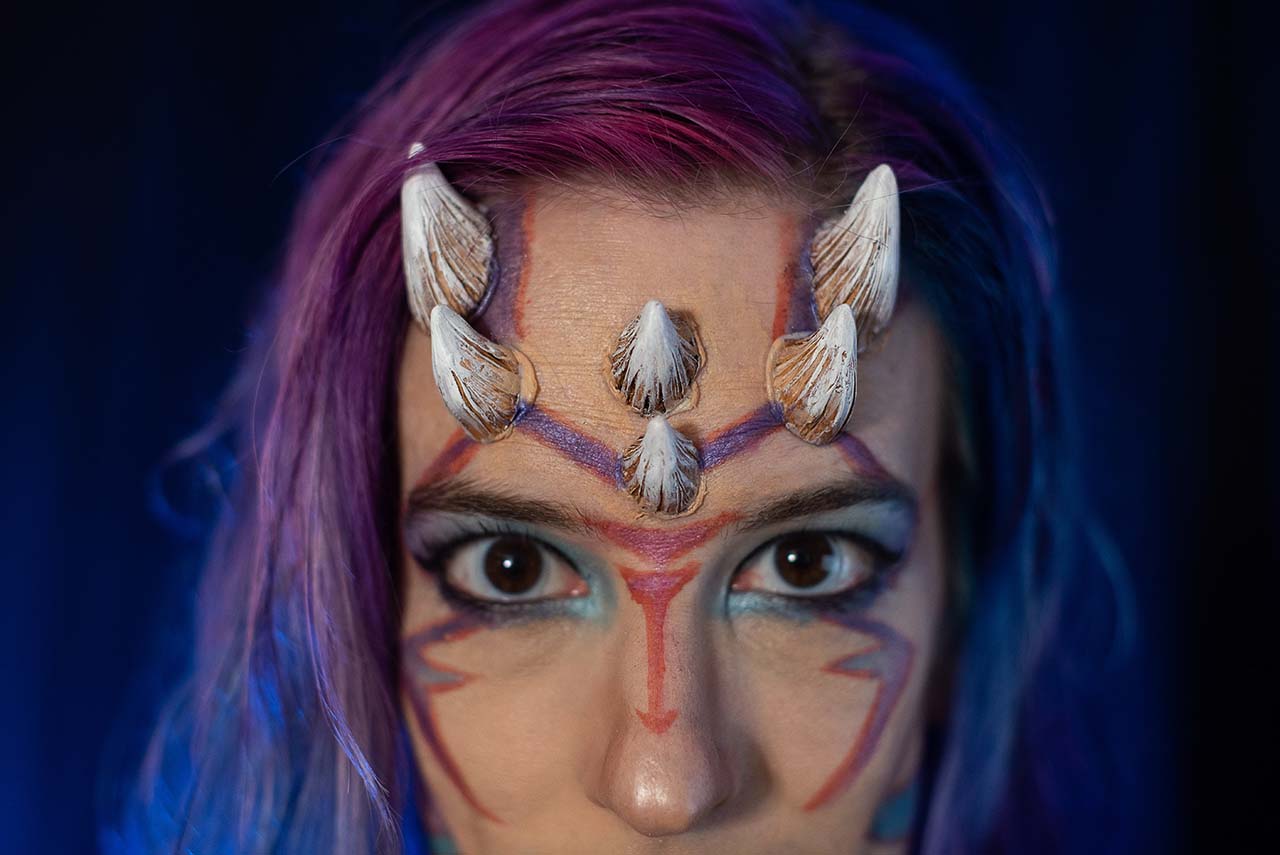Latex props are a great way to add realism and detail to your cosplay costumes. However, painting latex can be tricky, as the material is flexible and can crack if the paint is not applied correctly. In this tutorial, I will show you how to paint latex props so that they look professional and last for years to come.
Paints you can use on latex props:
Because of the flexible nature of most latex props, it is imperative that any paint or coating you put on the prosthetic is as flexible as the prop itself. I DO NOT recommend coating latex in spray paints, Plastidip, laquers, or enamels. These paints are not flexible enough and will crack pretty badly over time. You want to make sure your paint will look good for years to come, not just the first 5 minutes.
I DO recommend using one of the following:
- Acrylic paint — Not just any acrylic paint will do. I recommend Liquitex, a brand of paint that is mixed with latex, resulting in a high pigment, flexible paint. Remember to try and do as thin a layer as possible, since thicker layers will still crack.
- Airbrush acrylic paint — I use Createx airbrush paint, but there are other types of airbrush acrylics out there. It is much easier to get a thinner layer using airbrush paints, which helps prevent the cracking issue
- Bodypaint — For exact color matching, you can use the very same bodypaint that you’re using on yourself. Whether water- or alcohol-based, bodypaint will remain flexible when dried so is a great option. Just be warned that even if you seal or set the paint, you’re likely to have to touch it up on a regular basis. Bodypaint is also a great option if you want to remove the paint and re-paint your prosthetic in a different color!
(Special Mention) Foundation — A lot of people who are working with props that need to be skin-colored will seek out a foundation! I list this as a special mention because I actually do not recommend this (though I understand that sometimes color matching to your natural shade might leave this the only option!)
The reason I don’t like using foundation is that there are so many brands out there, and not all of them react well with latex. For example, if for some reason the foundation has certain oils in it, that oil can actually degrade the latex and cause it to become brittle.
Instead, I would recommend looking up bodypaint brands that specialize in “foundation” shades of bodypaint. Or foundations specifically designed for airbrushing. Temptu is a great example of bodypaint with lots of skin colors to choose from.
That said, if you need to use Foundation, just be aware that some brands may not work as well as others, and you might need to do some trial runs to find a foundation that works for both your skin and your latex prop.
Methods of applying the paint:
Hand painting:
Pros:
- Cheaper — all you need to get going is your paint and some brushes.
- Easier to do fine details such as geometric tattoos or any designs with a sharp edge
Cons:
- Difficult to make sure that your coats are thin, meaning paint jobs are much more likely to crack.
- Time consuming, will take much longer than airbrushing

Airbrushing
Pros:
- Much easier to get an even, light coat with a minimum of pigment use
- Faster than hand painting by far
- It is far easier to blend and make gentle gradient style markings
Cons:
- Sharp designs or clean edges require precision with a fine tip or stencils
- Requires an airbrush set-up







